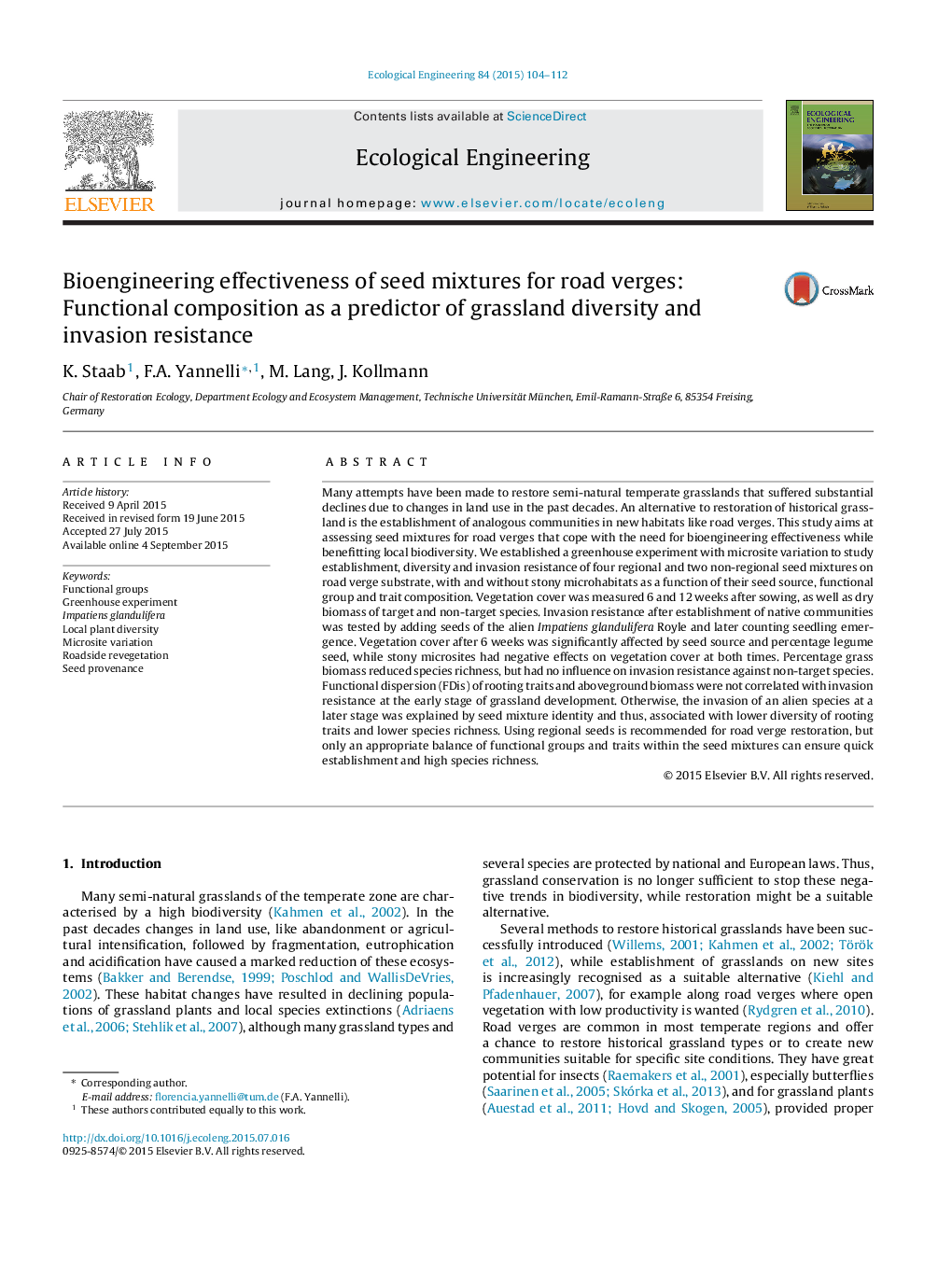| Article ID | Journal | Published Year | Pages | File Type |
|---|---|---|---|---|
| 4388773 | Ecological Engineering | 2015 | 9 Pages |
•The early establishment of seed mixtures was tested in a greenhouse experiment.•The use of regional seed source and legume seeds, favoured early vegetation cover.•Stony microsites had an overall negative effect on vegetation cover.•Early grass biomass reduced species richness with no effect on invasion resistance.•High diversity of species and of root traits lead to lower community invasibility.
Many attempts have been made to restore semi-natural temperate grasslands that suffered substantial declines due to changes in land use in the past decades. An alternative to restoration of historical grassland is the establishment of analogous communities in new habitats like road verges. This study aims at assessing seed mixtures for road verges that cope with the need for bioengineering effectiveness while benefitting local biodiversity. We established a greenhouse experiment with microsite variation to study establishment, diversity and invasion resistance of four regional and two non-regional seed mixtures on road verge substrate, with and without stony microhabitats as a function of their seed source, functional group and trait composition. Vegetation cover was measured 6 and 12 weeks after sowing, as well as dry biomass of target and non-target species. Invasion resistance after establishment of native communities was tested by adding seeds of the alien Impatiens glandulifera Royle and later counting seedling emergence. Vegetation cover after 6 weeks was significantly affected by seed source and percentage legume seed, while stony microsites had negative effects on vegetation cover at both times. Percentage grass biomass reduced species richness, but had no influence on invasion resistance against non-target species. Functional dispersion (FDis) of rooting traits and aboveground biomass were not correlated with invasion resistance at the early stage of grassland development. Otherwise, the invasion of an alien species at a later stage was explained by seed mixture identity and thus, associated with lower diversity of rooting traits and lower species richness. Using regional seeds is recommended for road verge restoration, but only an appropriate balance of functional groups and traits within the seed mixtures can ensure quick establishment and high species richness.
